“The Substance” of Nightmares: Oscar-Nominated Makeup Effects Master Pierre Olivier Persin on His Terrifying Transformations
Since its release last fall, writer/director Coralie Fargeat’s body horror thriller The Substance has artfully shocked Academy Award voters to the tune of five Oscar nominations, including Best Picture, Best Director, and Best Screenplay. Outstanding Actress nominee Demi Moore portrays aging actress Elisabeth, who gets way more than she bargained for after injecting herself with a serum that makes her look younger in the form of lithe “Sue,” played by Margaret Qualley.
Filmed in France, Fargeat enlisted prosthetics makeup designer Pierre Olivier Persin to craft the shocking transformations. The Oscar nominee and his team largely eschewed CGI, instead relying on silicone and old-school analog tricks of the trade to conjure freakish incarnations of the film’s two stars.
Speaking from his home in Paris, Persin deconstructs “The Blub,” explains Demi Moore’s “Gollum” mutation, and describes how he smashed two characters into one hideously charismatic “Monstro” hybrid.
Spoilers below!
Demi Moore’s character gets old very rapidly, starting with one decayed index finger and progressing to a scene where she’s aged almost beyond recognition with a shock of white hair, knobby knees, and creaky bones. What were you going for there?
For Demi’s hair, we took inspiration from the mother, played by Ellyn Burstein, at the end of Requiem For a Dream, where she’s addicted to speed. Demi’s fully covered in this scene— neck, face, contact lenses, full wig, bald patch—but we tried to keep it subtle.
The real shocker comes when Elisabeth wakes up to find she’s become a bald, naked hunchback.
We called that the “Gollum” stage. Coralie asked for details like the crooked nose and the eyebrows [slanting down] 45 degrees, so she’s a mix between a witch and a hunchback. We wanted it to be realistic but with a fantastical touch.
What was the process for bringing “Gollum” to life?
We had Demi inside the makeup, and we also had a very skinny actress with fully prosthetic arms, especially for shots where you don’t see her face. And then, we used a stunt double with complete prosthetic makeup. You might see a close-up of Demi’s face. The next shot might be the skinny actress, then the stunt double slamming into the sink in the bathroom, then switching back to Demi. So, to answer your question, we had three “Gollums” – – that’s how we did it.
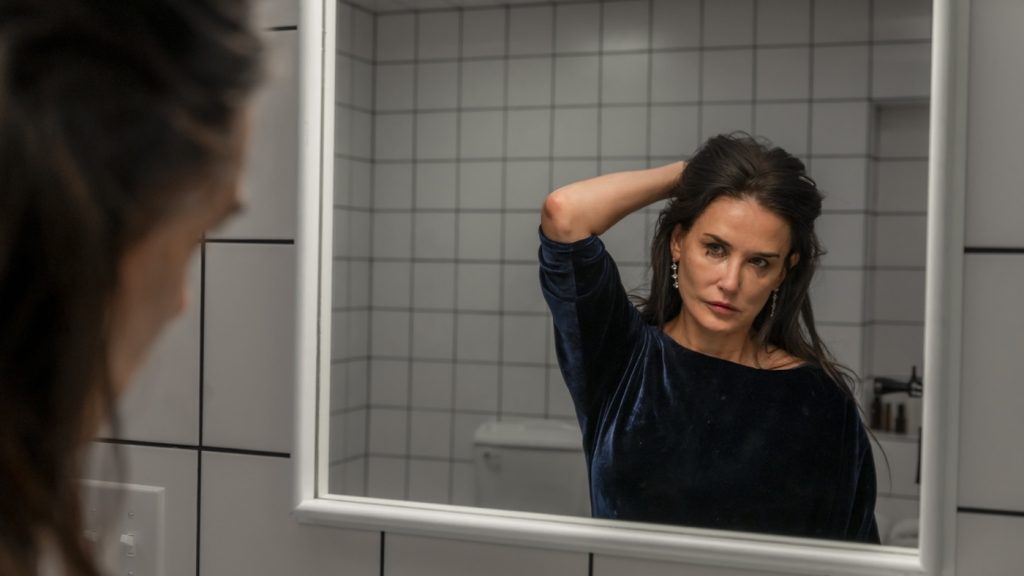
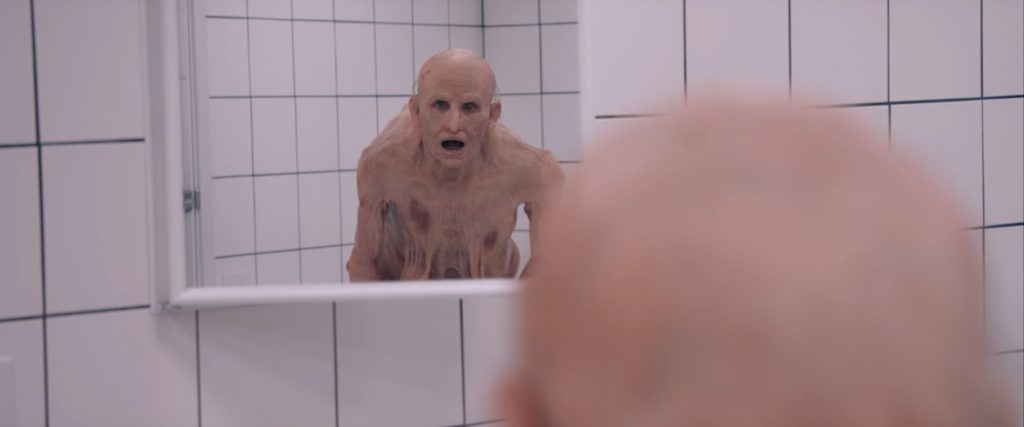
How long would it take to get Demi Moore into Gollum mode?
That first reveal of her full upper body when Demi sees herself in the mirror probably took six hours and thirty minutes. For the full body on the skinny actress, [it took] seven and a half hours. They were fully covered because the action showed Elisabeth falling down and fighting so I didn’t want to use a suit that would wrinkle. This was full silicone prosthetic makeup from head to toe, glued to the skin.
The hump itself sort of jiggles as she moves. How’d you do that?
We had the prosthetic appliance, then hollow space, and then the actress’s body, so when she’s moved around, the hump would go like [shaking motion] Woop woop. Same with the breasts; we wanted to try as much as possible to give them this jiggly flesh quality.
Old Elisabeth’s skin looks pretty awful at this point.
We, of course, painted on top of the translucent prosthetics, but we also used red wool.
Wait, wool?
Like what you make a jumper from. If you work the wool a little bit, you can put red yarn inside [the silicone] and make it look like horrible varicose veins on the back of the legs. The opaque wool made a nice contrast to the translucent silicone.
Warning – graphic images ahead
When The Substance shifts focus to Margaret Qualley’s “Sue” character, she’s lying unconscious on the floor when her back splits open from within. You had storyboards, you had full-body scans of Margaret—where did you go from there?
For Sue’s back ripping open, we made two silicone dummies laying on their sides. We raised the set so we could puppeteer the silicone dummies from inside to create that rippling effect. It was a mix of cable control mechanisms and puppetry by hand. We also had a very big back prosthetic that we glued onto a stunt double.
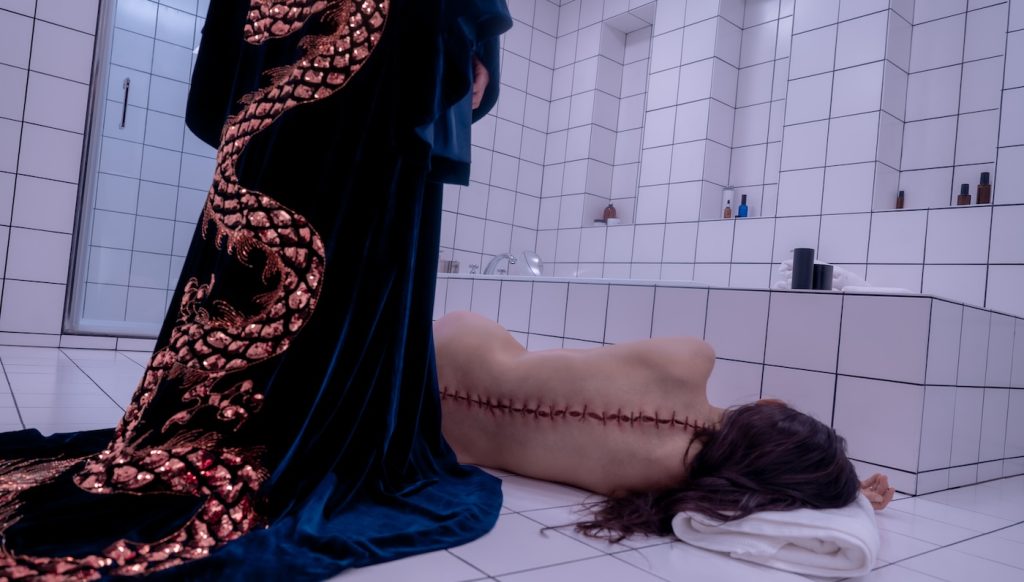
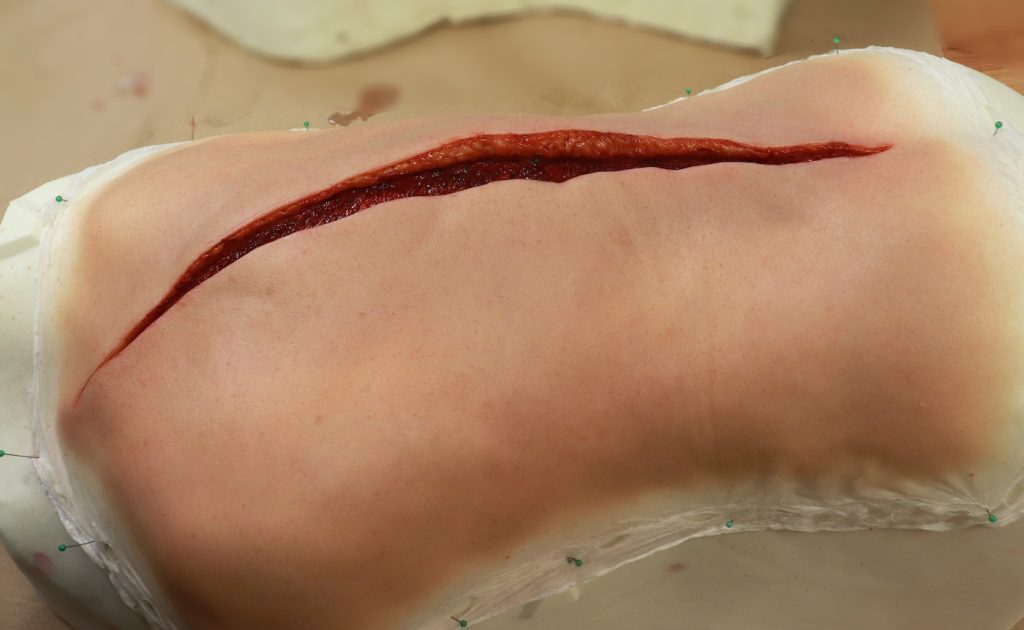
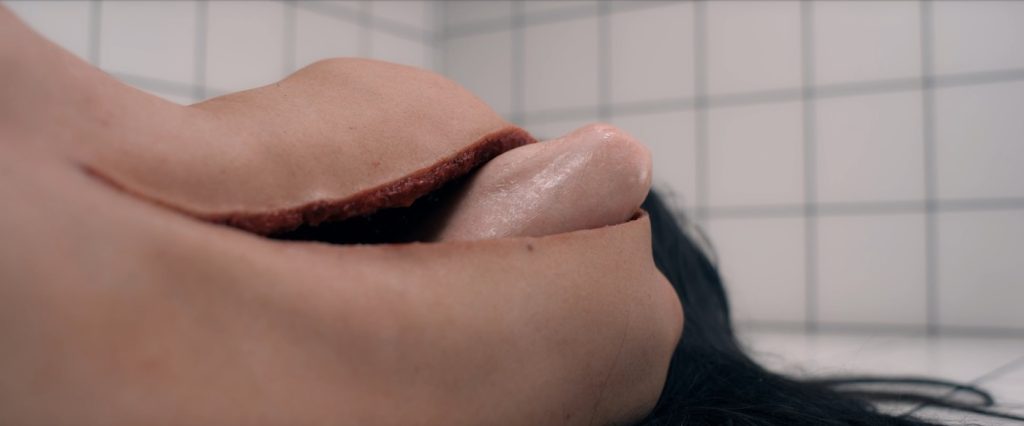
SPOILER ALERT
For the crazy grand finale, Elisabeth and Sue merge their bodies together and form “Monstro Elisasue.” What was the concept there, and how did you execute it?
The concept was a little bit like putting two bodies in a shaker — you start shaking and end up with a potato head on the whole body. Coralie’s script had the idea of putting Demi’s face on the back of the body, but I came up with the rest, like the arm facing backward. And Coralie said, “Since we are putting two characters into one monster, it should have four boobs.” But Monstro has seven boobs. One guy told me, “That makes no sense.” I said, “At this point, we don’t care! She could have eight!” It’s crazy time, so Monstro can have as many boobs as she wants.
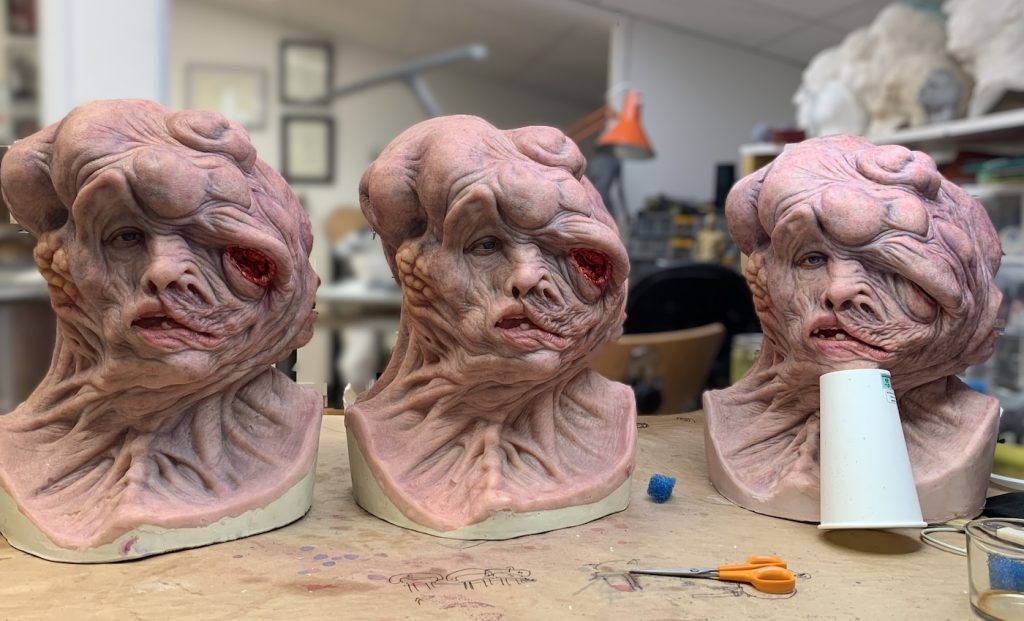
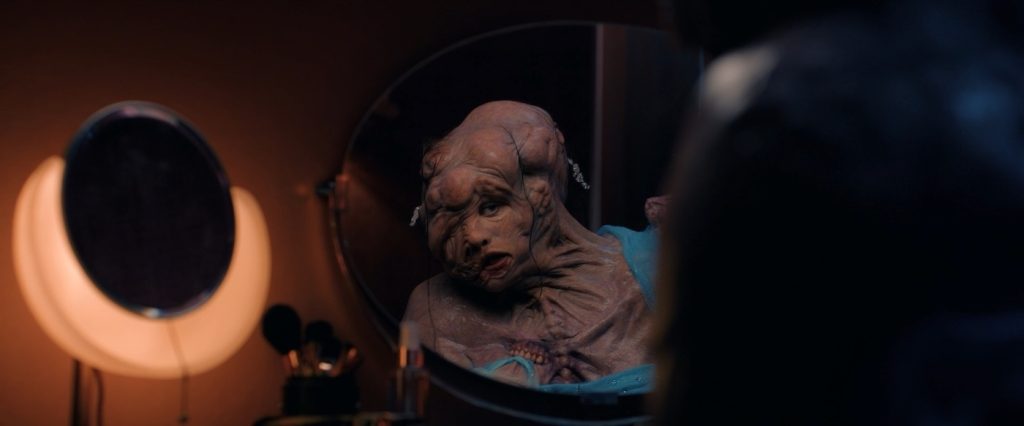
Monstro has a lot going on in terms of detail. Was that deliberate?
I really wanted every angle on Monstro to be interesting—the back of the head, the arm facing backward, the head twisting on the side. Also, we wanted her to be like a ballerina with a dancer’s feet, so she moves very nicely with this grotesque body. She’s not a monster that kills people or a zombie or an alien. She has this dramatic quality. Monstro was Coralie’s baby and my baby, too.
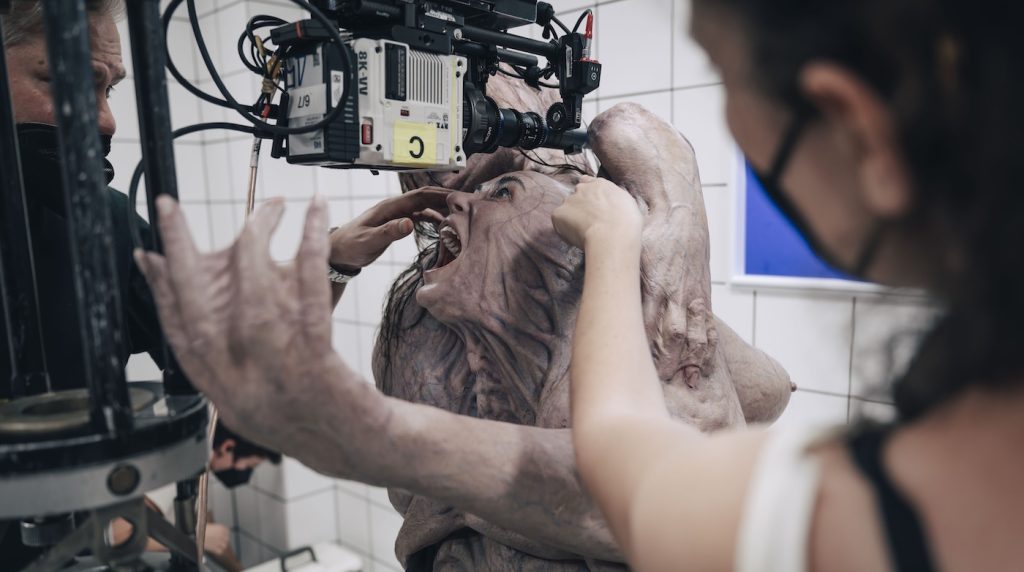
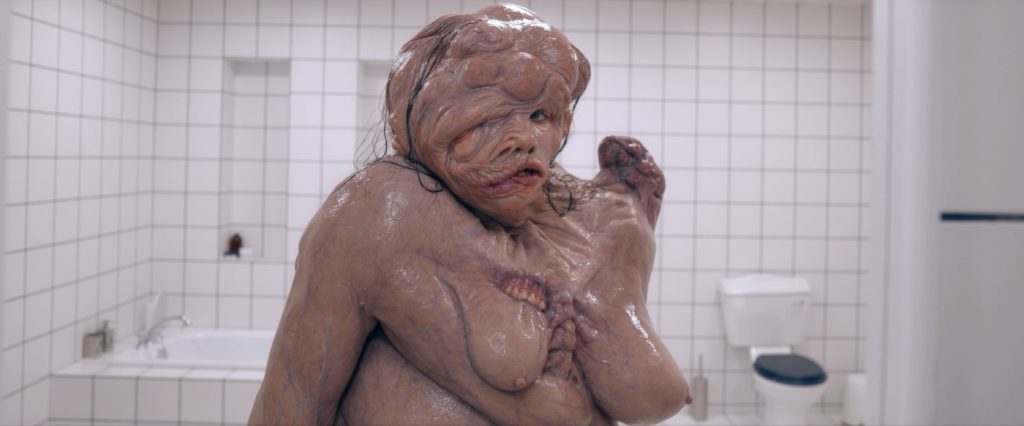
“Sue” is supposed to host a New Year’s Eve extravaganza, but instead, she morphs with Elisabeth into Monstro and staggers down a hallway spewing blood before she walks on stage to an audience of horrified people. How was that sequence actually performed?
All the close-ups were done on Margaret, and all the wide shots were done on the stunt doubles. When Monstro walks down the corridor with the blood going everywhere onto the walls, the stunt double had a trolley on wheels underneath her dress [for support] because the weight of the suit and the [recoil from] the blood rig was so heavy. Her real arm was sticking out against a VFX green screen, and we puppeteered as much as we could. I think we shot the scene twice, and it was done.
By the end, Elisabeth has been reduced to a puddle with a face that inches like a caterpillar down Hollywood Boulevard. Did you use CGI for that?
We called that The Blob, but we’re French, so we called it The Blub. We built a silicone puppet with rope and puppeteered the Blub on set. Demi’s crying and screaming — proper acting that you can’t get with a puppet — so we shot her [performance] live, and then the VFX people gave it an organic look. The face on Monstro’s back — Demi’s screaming face, the eyes, the tongue — all that was pure VFX.
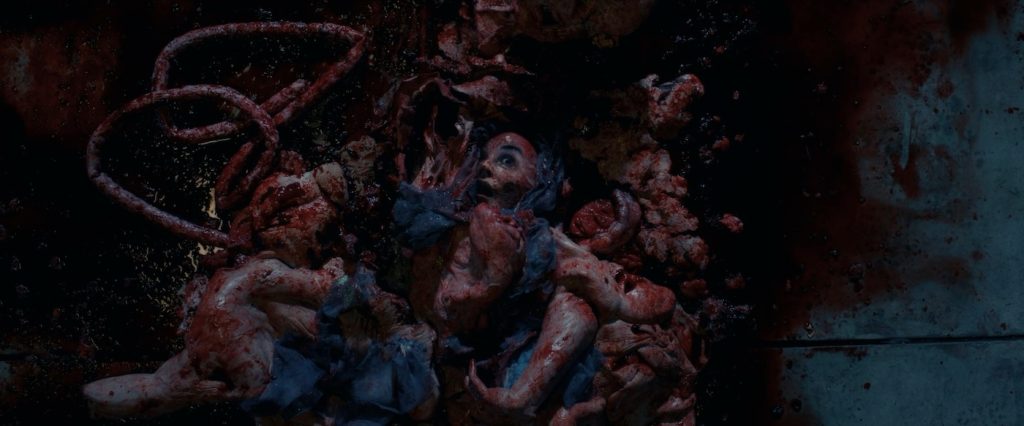
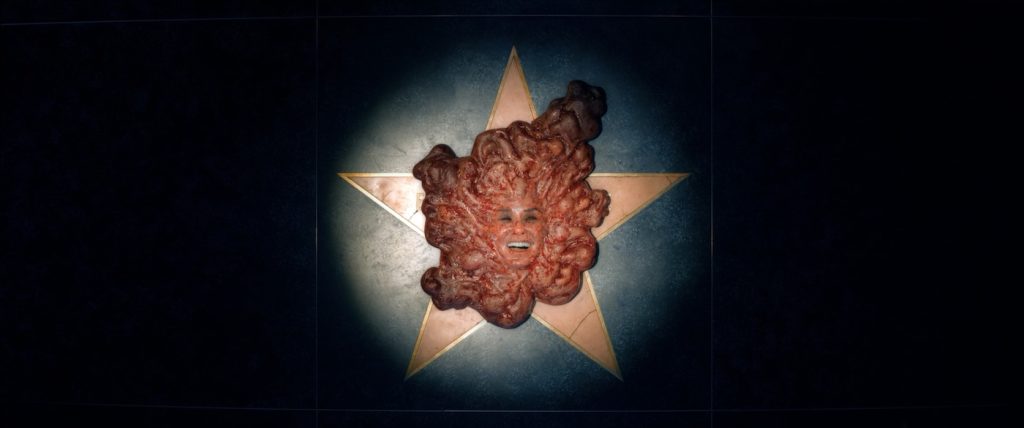
You and your team of 15 people spent 11 months collaborating with The Substance creator Coralie Fargeat. What’s she like to work with?
Coralie’s really demanding about each shot, not just prosthetics. Someone drinking a glass of water is filmed as if it were the most important thing in the movie. She makes no compromises. As we say in France, Coralie left no wounded down the road. You just kill everyone!
After spending all this time within the world of The Substance, what’s your takeaway about the story’s message to the world?
The two leading ladies are so harsh with themselves. Some people don’t understand why Sue and Elisabeth fight when they meet for the first time. “They could have a tea and chat.” But no, she hates herself. So for me, in a weird way, I think that’s what this movie is saying. “Love yourself. Be kind to yourself.”
For more interviews with Oscar-nominees, check these out:
“Conclave” Oscar Nominee Peter Straughan on Scripting a Devilishly Good Vatican Thriller
How Director Mohammad Rasoulof Shot his Oscar-Nominated “The Seed of the Sacred Fig” in Secret
No More Games: “September 5’s” Oscar-Nominated Writers on the Day Terror Took Center Stage
Featured image: Margaret Qualley, foreground, plays the younger version of Demi Moor’es Elisabeth, pictured in the poster on the wall. © MUBI & Working Title!



